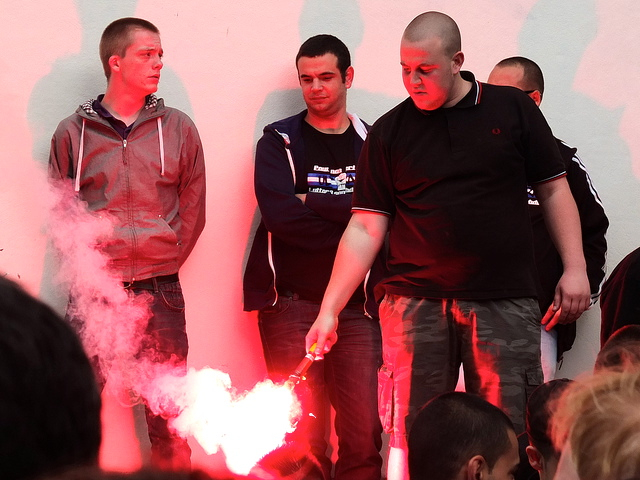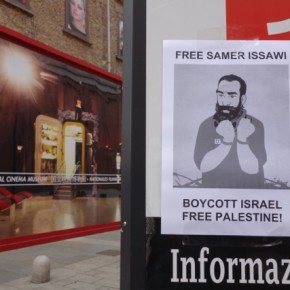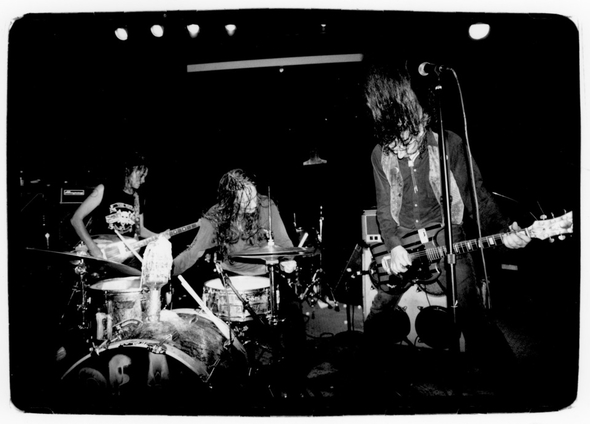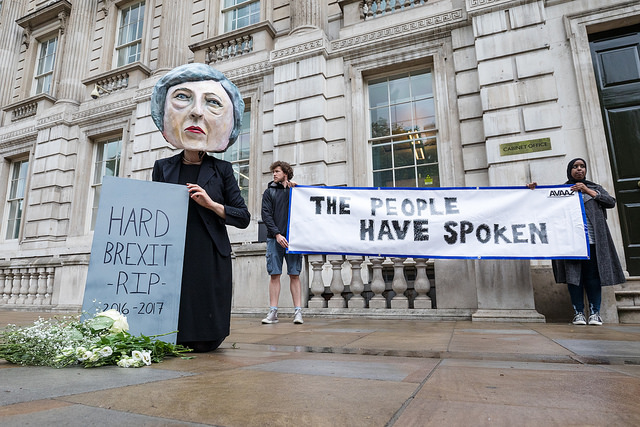The fight, in which Clément Meric died, apparently started over some shirts. An 18-year-old student at Paris’ prestigious Sciences Po, Meric was headed to a clothing shop in the 9th Arrondissement when he encountered a group of skinheads headed to the same store. His killer, Esteban Morillo, is alleged to have been associated with the rightist Jeune Nationaliste Révolutionnaire, the largest organized skinhead group in France.
Clément Meric’s murder is notable for a number of reasons. Although Meric was an openly gay antifascist, his killing contains a number of interesting dimensions. Both he and his assailant were looking to buy Fred Perry clothing, favored by street activists of both the left and the right. More interestingly, the JNR, with which his killer has been linked, represents a peculiarly modern political formation on the far right. They are led by Serge Ayoub, a man whose Lebanese background seems oddly out of character with the racial politics of the extreme right.
The skinhead subculture has gone through many permutations. According to George Marshall’s Spirit of ’69: A Skinhead Bible, it arose as an outgrowth of the mods around 1964. The so-called “hard mods” of those days exchanged tailor made suits to blue jeans, Doc Martens, and cropped haircuts as more appropriate to the aggro filled atmosphere of the football terraces that they prowled. The original incarnation of the new youth culture was not explicitly racist, retaining continuity with the earlier mod culture via a fascination with a variety of black music, from Jamaican ska, rock steady, and reggae to American Motown and Stax Records artists.
Although overt racism was not originally a crucial part of the mix, violence was. The skinhead scene was a magnet for young men and women looking for that sense of belonging that gang subcultures so often provide. The potential targets were numerous. From supporters of opposing football clubs, to hippies, to gay men, to squaddies in the barracks towns, and students near the universities, from the beginning, skinheads were all about establishing the dominance of the their own testosterone infused, straight, “working class” values. And to say that the skinhead culture was not intrinsically racist is not to suggest that there were not strong elements of racism in their ranks, but rather that it was not directed at all non-whites. While early skinhead tended to coexist with those of African and Afro-Caribbean descent, those of South Asian heritage were another matter. From the outset, so-called “Paki bashing” was frequently in play.
Times changed, and the relative prosperity of the mid-1960s gave way to the economic decline and political fragmentation of the 1970s. The end of the postwar boom and the beginnings of deindustrialization narrowed the scope of economic opportunities available across the industrialized world, particularly for European youth who less well equipped to compete in a more restricted job market. The era whose lack of avenues for young people spawned punk rock also saw a regeneration of the skins as a parallel subculture, with Oi! music as its own cognate musical scene. These economic tensions arose against the backdrop of, and synergized with, increasing racial tensions. Enoch Powell’s famous “rivers of blood” speech, delivered in Birmingham in April 1968 was the leading edge of white pushback against an increasingly multiracial society in the United Kingdom. As such, it was unsurprising that groups on the fringes of the political right, such as the National Front and the British Movement (both founded in the late 1960s,) viewed the skinheads as potential foot soldiers in their campaign for racial hegemony.

In the 1980s, skinheads spread to continental Europe, North America, and Australia, even to Japan. To a certain extent it piggybacked on punk, tapping into the common currents of adolescent angst. But the admixture of violence and racism that had been introduced in the 1970s formed major continuing themes. Skinhead culture in the United States was complex. Some were more political, some less; some were racist, some anti-racist. But it was not long before those with a more rightwing and racist views began to gravitate toward groups like Richard Butler’s offshoot of the Christian Identity movement and Tom Metzger’s White Aryan Resistance. Representatives from the latter sent linked up with the East Side White Pride skins in Portland, Oregon convinceing the East Siders to up their level of violence, contributing in no small part to their murder of Mulugeta Seraw in November 1987. The resulting crackdown by local and federal authorities, both on WAR itself and on a range of violent rightist organizations like The Order, dealt a severe blow to the development of the far right skinhead movement in the United States.
Things developed rather differently in Europe, due to the different historical and political context. The extreme right had been long dormant, saddled with the heritage of the brutality of European fascism. The 1970s saw the regeneration of the extreme right in Europe, as the Second World War passed to the fringes of living memory. There was a growth both of populist movements and of think tanks and more intellectually developed entities which, although they remained on the margins of the democratic polity, had fluid interactions with the rightward edge of political conservatism. The skinhead scene thrived on the edges of both the punk scene and of football hooliganism. Like their counterparts in North America, skinheads in Europe also gravitated to movements of the political right.
For the last two decades skinheads have been extensively involved in the formation and development of movement of the far right in both Western and Eastern Europe. At the same time, antifascist groups such as Anti-Fascist Action, which has branches throughout Europe, have allied with more loosely organized autonomist groups to provide some physical opposition to attempts by the far right to dominate the streets. The efforts of the latter can be seen across Europe, from EDL rallies in the U.K., to the marches of the NPD in Germany, whose rightist politics flirt with (and sometime overstep) the bounds of legality in the birthplace of National Socialism.
France’s JNR, and the Third Way Movement (of which it is a splinter,) are peculiar in that although they are clearly denizens of the far right, they do not hold to all of the usual nostrums of this political tendency. The fact that their leader Ayoub is of Lebanese heritage suggests a slightly looser attitude toward questions of race. Ayoub himself came up through the nexus of skinheads and football hooliganism. He was known as “Batskin” as a member of one of the hooligan groups that prowled the Parc des Princes in support of Paris St. Germain football club. Ayoub became associated with the Third Way Movement, which although it rejects socialism and communism is also explicitly anti-capitalist. They claim to defend the workers and their right to self-determination, but along nationalist rather than internationalist lines.
Much of this may not, in the end, turn out to be directly related to the case of the murder of Clément Meric. The JNR has disclaimed any association with Morillo and his accomplices, and groups on the parliamentary right like the National Front have been quick to deny any connections to the JNR or Third Way. On the other hand, enough of a connection has been established for the French government to dissolve both the JNR and Third Way.
The political situation in France is highly volatile at present, with the passage of a law legalizing same sex marriage causing a surge of activism on the extreme right. It remains to be seen what the effect of the illegalization of the JNR and Third Way will have in such a context. However, the very existence of such groups suggests the possibility that violent elements from the country’s hooligan street culture are in the process of being domesticated in the world of shadowy connections between the parliamentary and extra-parliamentary right, both in France and elsewhere. Their outlawing would simply continue that process, forcing skinhead activists into more conventional political organizations, albeit ones whose politics matched theirs.
What began as an exchange of insults in a clothing store has resulted not only in an unspeakable tragedy for the family, friends, and comrades of Clément Meric. It has also shined a very public light on the rightwing street violence in France. Though it may be of little personal consolation, it’s not hard to imagine how it might speak to the late activist’s antifascist ideology.
Photographs courtesy of Place Gre’net and Hank. Published under a Creative Commons license.





